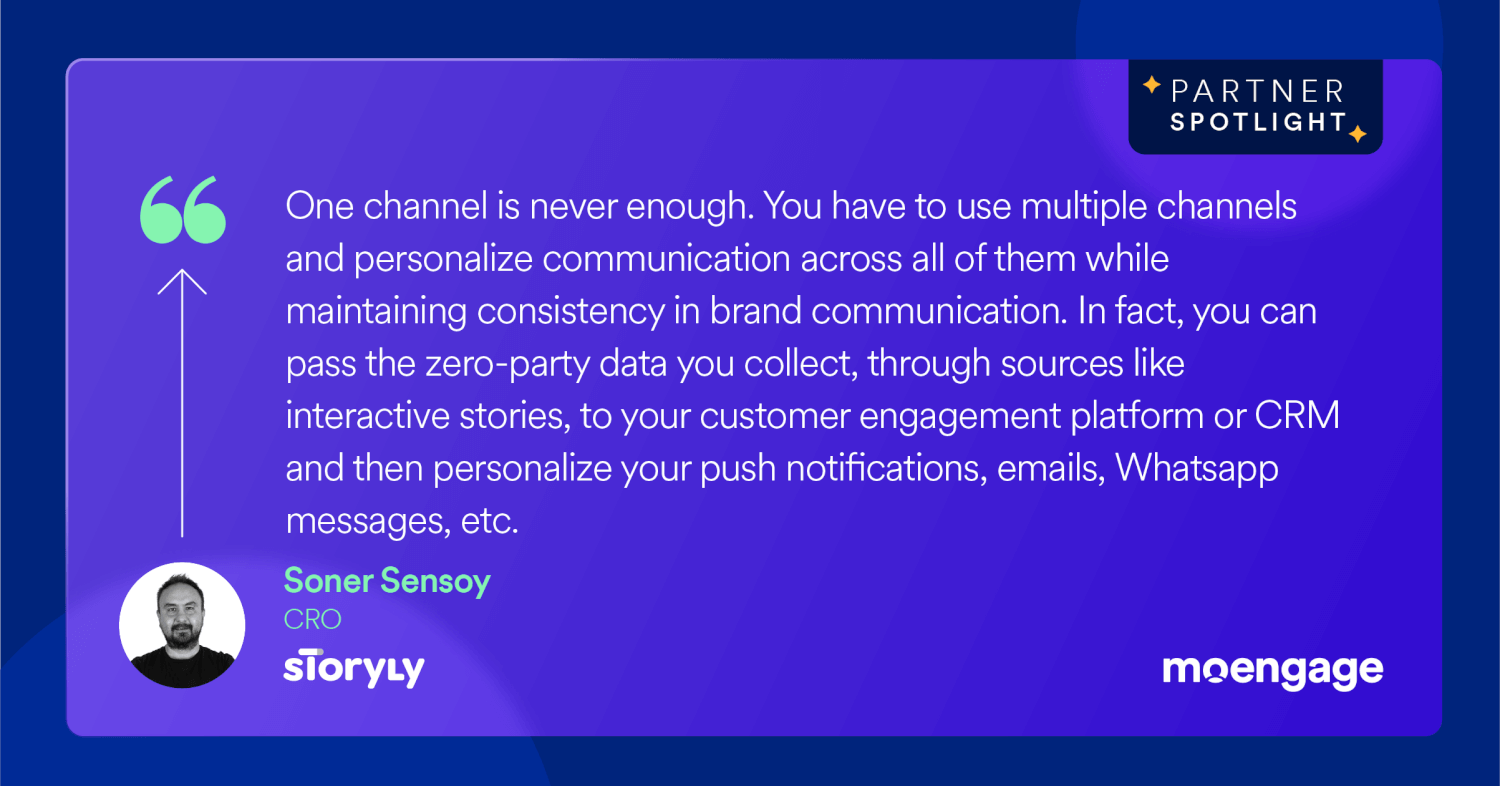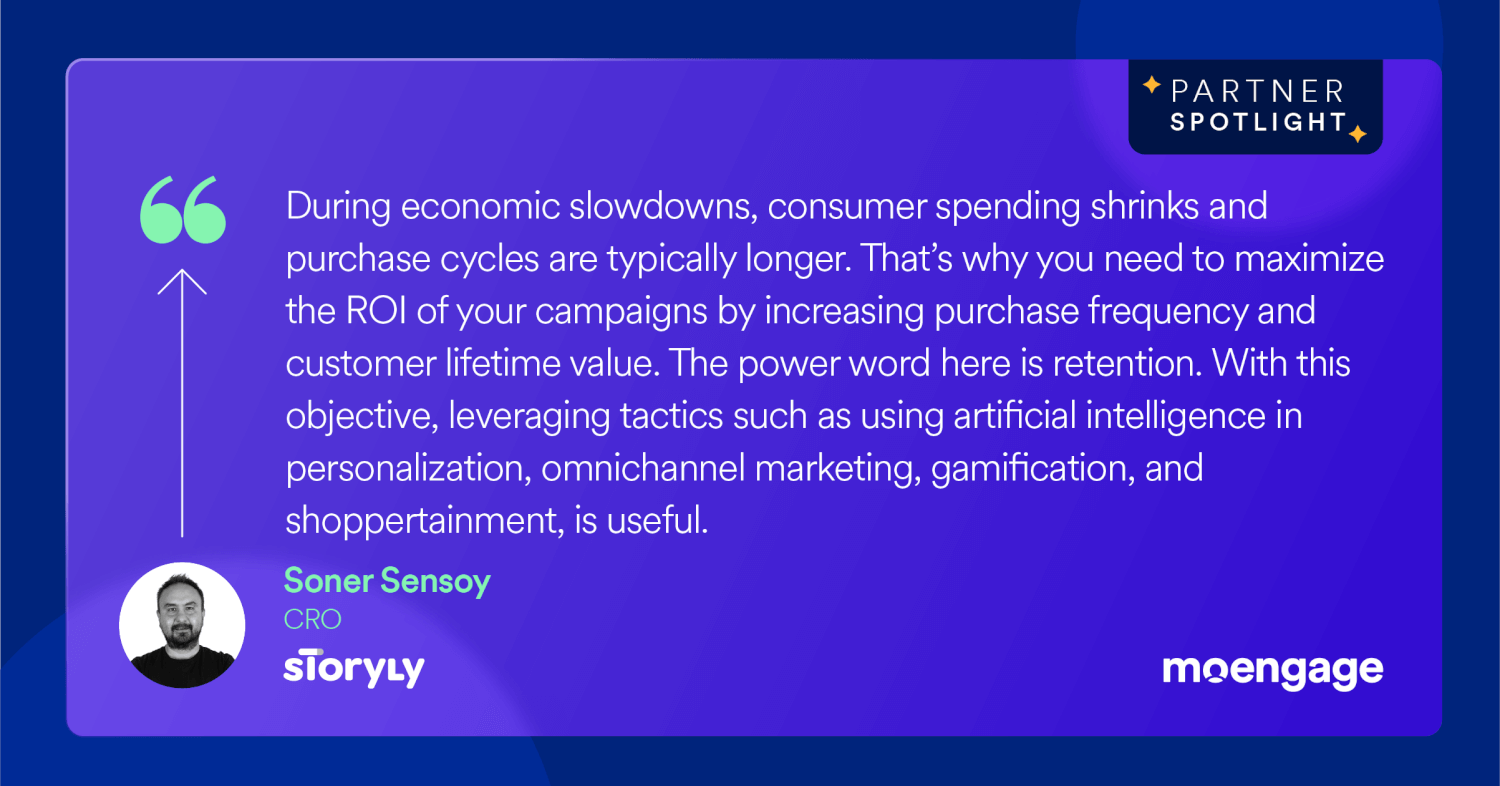[Partner Spotlight] Perfecting Your MarTech Stack by Adding a User Engagement Platform and Leveraging Interactive Content
![[Partner Spotlight] Perfecting Your MarTech Stack by Adding a User Engagement Platform and Leveraging Interactive Content](https://www.moengage.com/wp-content/uploads/Feauture-Image-1200x628-V3@2x.png)
Reading Time: 5 minutes
| Editor’s Note:
This is the second edition of the Partner Spotlight Series, where we are interviewing thought leaders and sharing their advice on how to perfect your martech stack and improve your engagement strategies to build comprehensive customer experiences. This blog features an interview with Soner Sensoy, the Co-Founder of AppSamurai, a venture capital-backed startup focused on mobile growth, and CRO of Storyly. Holding a BSc degree in electrical and electronics engineering from METU, Soner has been in the mobile marketing space since 2013. He has led product teams to build the first MVP of AppSamurai as the CPO. Currently, his priority is to achieve the expansion plans of Storyly together with his brilliant team. Read on to get his expert advice, tips, and trends around navigating data privacy and leveraging interactive content, such as stories, for customer engagement. |
Q1. With growing data privacy concerns, what are some unique ways to obtain zero-party and first-party data?
Let me go one step back and explain why we need to gather first- or zero-party data.
The digital landscape has profoundly changed since Apple introduced the ATT (App Tracking Transparency) framework. It’s not just that; new regulations exist about collecting and using third-party data across apps. Together with this process, we have witnessed a new understanding that has been built in terms of data privacy.
Privacy awareness is rising. Customers, especially Gen Z, are asking for differentiation between personalization and “stalking”. This means they value meaningful personalization in digital experiences served to them but don’t want their data to be collected, used, bought, or sold without their explicit consent.
Brands need to walk a fine line between personalization and privacy. Hence, the role of zero and first-party data is growing.
Since first-party data is based on customer behavior on your website or in your app, the best way to collect it is to multiply the interaction opportunities for customers. Consider TikTok and Netflix, for example. Both enable you to watch streamed videos and personalize your feed according to your watching behavior. However, since TikTok videos are shorter and easier to consume, the algorithm captures more signals about what you watch, skip, and like. No surprise that Netflix is implementing ‘Fast Laughs’ because you need to multiply the chances of customer interaction.
Zero-party data is even more powerful because it is information provided by customers willingly. And it is available on your own channels, like your app or website. You don’t need to rely on any third party. But why would they want to answer some questions you ask? You need to be transparent about what you will do with this information. Still, it can be dull if you email lengthy pages of surveys to your audience. Instead, you need to juice up your game and gamify the experience. For example, pop quizzes, daily trivia, and answer-and-earn scenarios can be powerful interaction use cases that can help you effectively extract zero-party data from your audience.
Q2. How can interactive content be leveraged for hyper-personalization and customer engagement?
Building on what I said before, interactive content is fundamental to delivering engaging experiences that will also help you collect data for personalization.
We tend to think within the limits of traditional app interfaces. But there is so much more that you can do. Let me take you through an example.
Customers might not have a specific item in their mind when they visit mobile apps for browsing. Hence, interactive in-app stories can become the first touch point for in-app and web discovery. Customers can just tap on stories and start browsing in a full-screen mobile native experience.
In such a scenario, the first thing that would come to your mind is using this space to showcase your products, announce campaigns, etc. It’s a good idea, and it will give you insight into your audience’s preferences. But let’s take it a step further. This is also a space for you to gamify the customer experience, collect data, and ask customers multiple questions.
You can include interactive stickers (such as quizzes, polls, and this-or-that stickers) or add open-ended questions, emoji sliders, and bars to ask them about their preferences regarding style, color, hobbies, brands, etc. Basically, anything you can think of. And this will help you know your customers better.
The next thing you can do is showcase relevant content to the audience segments you created based on customers’ responses to the interactive stories.
Now take it one step further. Think about the channels. One channel is never enough. You have to use multiple channels and personalize across all of them while maintaining consistency in brand communication. In fact, you can pass the zero-party data you collected, through sources like interactive stories, to your customer engagement platform or CRM and then personalize your push notifications, emails, Whatsapp messages, etc.

In today’s time, just greeting your customers with “Hello, Soner!” is not enough. Customers are now demanding more. And hyper-personalized experiences created based on zero-party data collected from interactive content is a great way to elevate customer experiences.
Q3. What are the top 3 customer engagement trends brands need to watch out for?
For starters, I would address the rise of snackable content, shoppable videos, and interactive experiences, especially in e-commerce. Now, we even have a term for it: Shoppertainment, i.e. combining shopping with entertainment. It is how customers prefer to consume content today. And it is how e-commerce businesses can help them shop the look by creating engaging content and making it shoppable.
The second trend would be omnichannel communication. Due to the pandemic, we saw a boom in the use of digital services. But with the end of lockdowns, customers are back to shopping out at the brick-and-mortar stores again. They don’t make a distinction between online and offline. So, building a communication and marketing strategy that combines online and offline is necessary for brands.
The third major trend is artificial intelligence (AI), of course. The development of generative AI technologies is already here to maximize the impact of customer engagement efforts with content creation, personalization, virtual assistant, and chatbots.
Q4. What advice do you have for brands to achieve sustainable growth in a recessionary landscape?
During economic slowdowns, consumer spending shrinks and purchase cycles are typically longer. That’s why you need to maximize the ROI of your campaigns by increasing purchase frequency and customer lifetime value. The power word here is retention. With this objective, all the tactics that I mentioned previously, such as using AI in personalization, gamification, shoppertainment, and omnichannel marketing, are useful.

This is a challenging task. So, you need a powerful MarTech stack that can collect data, turn data into insights, turn insights into robust experiences, and integrate multiple channels to deliver the right messages at the right place and time.
| Thank you, Soner, for sharing your thoughts and advice. This was an eye-opening conversation with much-needed insights as brands navigate economic uncertainty.
Marketers – We hope you were able to take away a few learnings about mobile marketing, zero and first-party data, interactive content, and shoppertainment. To know more, you can connect with Soner on his LinkedIn, and we’ll catch you here next time at another partner spotlight interview.
Signing off, FJ |















